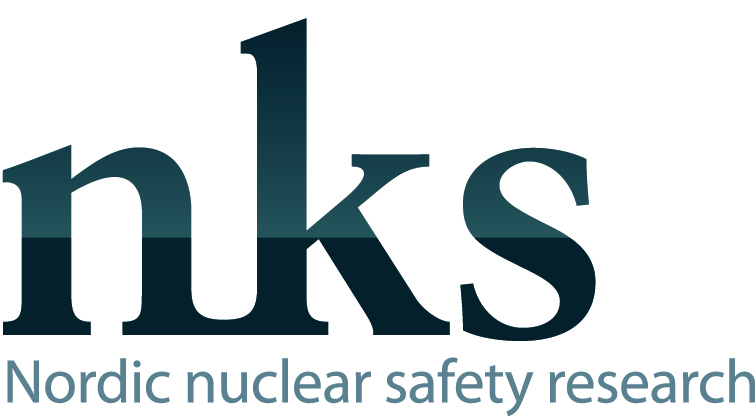penn state enterprise asset management strategy the office of physical plant (opp) enterprise asset management strategy defines the manageme
Penn State Enterprise Asset Management Strategy
The Office of Physical Plant (OPP) Enterprise Asset Management
strategy defines the management approach for designing, constructing
and maintaining physical assets that are critical and important for
meeting Penn State’s mission and business objectives. These business
objectives include many facets of activity at Penn State that required
a management organization that is well informed and employs an
integrated information system that is structured to meet current and
future goals in support Penn State’s Sustainability Program, high
levels of asset performance, minimize risk and control costs. The
integrated information system must be accurate, reliable and easily
used for the management of assets and related asset life cycle
activities.
The following statements provide the foundation for developing
standards and management information systems to meet these OPP
business objectives:
*
Standardized Business Processes – Asset management includes a
risk-control process whereby decisions are made regarding the use
of resources to lower the risk of asset impairment or failure.
With a full understanding of the importance of the asset in the
support of the organization’s goals; resources can be allocated to
meet Sustainability Program requirements, for all types and phases
of planning, design, construction and operation & maintenance
programs. Standard business processes across Penn State facilities
directly support multiple features of asset life cycle activity
including planning, allocation of budgetary and manpower
resources; prioritization of work and replacement/refurbishment of
assets, and development of performance and process metrics to
ascertain best practices and monitor asset vulnerabilities across
Penn State University assets
*
Deploy a Computerized Asset Management System – To the extent that
the benefits outweigh the financial and indirect costs, OPP will
use and integrated asset management system and database that
supports full asset life cycle activity. The management of assets
will include such activities as planning, facility design,
construction, engineering & operations and maintenance management.
The database will include sustainability program activity, work
performed, work history, cost tracking, planning and scheduling of
manpower and material resources, asset prioritization, condition
monitoring, and related information to support management’s
business objectives.
*
Apply Asset Management Database Configuration - the management of
the asset data base including the data configuration, change
control and access control are to be maintained in a formal
information technology configuration management program. The asset
management system must be available on a full-time basis and be
backed up. Configuration management must include a disaster
recovery program. All changes to the configuration must be
documented and formally approved by management before being
released for production.
*
Provide a Highly Responsive Service Organization- OPP responds to
a large population of students, faculty, staff and visitors that
can identify problems across the campus with facilities, housing,
equipment, assets and other issues that may impact the
individual’s needs. Provisions must include all services that
support the mission such as space planning, master planning,
design services, project coordination and other services important
to meeting basic obligations of OPP. The asset management database
provides the information required for dispatching, tracking and
reporting work performed in response to request for service and
support provided by OPP.
*
Establish a Project Management Program – the planning, design and
construction phase of asset life cycle is the starting point for
creating new assets in to the asset database. Specific management
guidelines provide for the timing and process of setting up and
applying the asset management database to collect and enter
information for critical and important assets. The asset database
design and configuration will support the management and tracking
of assets during the design and construction phase. A formal
process of transferring the construction asset data status to the
operations and maintenance organization is required. Since the
Sustainability Program requirements begin in this asset life cycle
phase; the asset database must support the attributes for asset
sustainability design and construction that enable tracking
Sustainability Program accomplishments
*
Enhance Material and Inventory Support – Through the use of the
asset database information, and collaboration with maintenance
planners and construction project planning, the management of
inventory will ensure critical parts/spares are available when
they are required to support accomplishing scheduled maintenance
and project work. Inventory of critical parts/spares is optimized
through standardization of part numbers, clear part descriptions,
and available quantities in stock. Frequent communication among
maintenance, inventory, and purchasing professionals will use
common information systems to support the planned and scheduled
work.
*
Support Safety, Security and Regulatory Compliance– the asset
database will be the official source of information used to
support assets that are required to meet safety, security and
other asset related requirements to meet Federal, State and local
regulatory reporting and information requirements.
*
Provide Training Support – the application and use of the asset
management database is complex, as are the business processes to
support the organization’s need to meet their business objectives.
As the organization requires a high-end, integrated asset
management database to support these activities; it also must
invest in the appropriate, long-term training and support to use
database system. The standardization of business practices, data,
inventory, and configuration allows the organization to develop
and continually deliver standardized, appropriate training for
management and staff.
*
Optimization of Work Processes – Efficiency is the application of
available resources to achieve a particular outcome at the least
cost. Efficiency is enhanced when the information in the asset
management database is used to schedule labor, material, and
equipment resources for accomplishing work. The coordination of
activities and work to optimize time associated with resources
results in an efficient and cost effective performance of the work
force. The integration of planned and scheduled work groups within
the organization enables management and supervision to fully
utilize resources. Planning effort defines technical work content,
materials tools and labor requirements to accomplish work
effectively. Scheduling objectives are the allocation and timing
of resources to optimize performance and support integration
between work groups within the specified time period.
*
Strengthen the use of information to enhance the integration of
key programs – OPP has a large number of programs that will
benefit from sharing a common asset database. These programs cross
organizational boundaries and the sharing of a common set of asset
information is critical to improving the decision making
processes. Programs such as continuous commissioning, space
planning, space utilization, engineering assessments and many
other programs must have the opportunity to share common
information that is readily available in a controlled and
protected database.
*
Accomplish High-Value Work – the organization employs an asset and
work order priority system to ensure resources are focused on
accomplishing the highest-value work first. High-value work
directly supports the care of critical and important assets that
enables the OPP to achieve its principal goals of sustainability,
meeting staff, student and visitor requirements, cost
effectiveness, safety and security. The asset database is the
primary source of information to assist in the tracking and
scheduling of work so that the highest-value work is readily
identified and can be scheduled on a priority and resource
availability basis.
*
Deploy a Metrics and a Performance Reporting Program –
Standardization of business practices, critical data, and uniform
database configuration enables the use of an organizational-wide
reporting system of performance metrics and indicators. Metrics
must facilitate identifying potential best practices for asset
life cycles activities including design, construction and
maintenance. Support activities such as material support, contract
management, budget and cost tracking, sustainability requirements
and other major programs may be included in the metrics program.
Metrics are designed to reflect management and supervision’s
performance as related to their role for the successful
performance asset life cycle activities.
 PROTECCIÓN DE DATOS PERSONALES SOLICITUD DE ACCESO RECTIFICACIÓN CANCELACIÓN
PROTECCIÓN DE DATOS PERSONALES SOLICITUD DE ACCESO RECTIFICACIÓN CANCELACIÓN N KSB CALL FOR PROPOSALS 2021 PROPOSAL FORM FOR
N KSB CALL FOR PROPOSALS 2021 PROPOSAL FORM FOR IFRIC 15 – INVITATION TO COMMENT ON EFRAG’S ASSESSMENTS
IFRIC 15 – INVITATION TO COMMENT ON EFRAG’S ASSESSMENTS OBSOLETE PESTICDES STOCKPILES IN NEPAL AND ITS ENVIRONMENTAL IMPACT
OBSOLETE PESTICDES STOCKPILES IN NEPAL AND ITS ENVIRONMENTAL IMPACT S S1105 REV 0706 INVENTORIES REQUEST FOR WRITEOFF
S S1105 REV 0706 INVENTORIES REQUEST FOR WRITEOFF LAMPIRAN 1 JUDUL (FONT 14 TIME NEW ROMAN) SKRIPSI
LAMPIRAN 1 JUDUL (FONT 14 TIME NEW ROMAN) SKRIPSI 9 MINNA ÞEKKTIR ÁHÆTTUÞÆTTIR 9 1 B PAID SPURNINGAR
9 MINNA ÞEKKTIR ÁHÆTTUÞÆTTIR 9 1 B PAID SPURNINGAR INTRODUCTION THE SPRINT ADDRESS VALIDATION TOOL ALLOWS THE INITIATOR
INTRODUCTION THE SPRINT ADDRESS VALIDATION TOOL ALLOWS THE INITIATOR MISSOURI DEPARTMENT OF HEALTH AND SENIOR SERVICES ADMINISTRATIVE POLICY
MISSOURI DEPARTMENT OF HEALTH AND SENIOR SERVICES ADMINISTRATIVE POLICY IMMERSION SCHOOLS IMMERSION SCHOOLS ARE AN EDUCATIONAL SUCCESS BUT
IMMERSION SCHOOLS IMMERSION SCHOOLS ARE AN EDUCATIONAL SUCCESS BUT